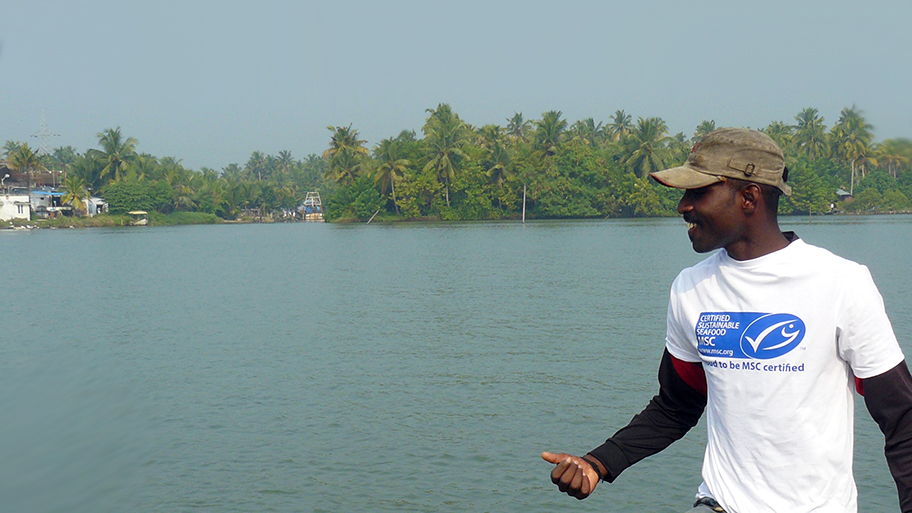We’ve been working with our partners for 20 years to protect the oceans and make it simple for you to choose sustainable seafood. Our story goes back a little further though…
Read the full, illustrated story
Sustainable Seafood: the first 20 years
The Press Association
A history of the Marine Stewardship Council
MSC timeline
1992
The collapse of Grand Banks cod fishery in Canada leads to 35,000 fishers and plant workers from over 400 coastal communities losing their jobs. This event highlights the global issue of overfishing, which is affecting the environment, livelihoods and seafood supplies.
1995
Conservationists from WWF and representatives from consumer goods giant Unilever meet to discuss what they could do to curb the problem.
1996
A statement of intent, co-signed by WWF and Unilever is issued.
1997
The MSC is officially launched as an independent non-profit organisation. ‘Principles and Criteria for Sustainable Fishing’ are drafted.
1998
The MSC Fisheries Standard is born, following 18 months of international consultations with more than 300 scientists, academics and organisations from around the world.
1999
The MSC program becomes fully operational with the first fisheries entering independent assessment to the newly formulated standard for sustainability.
Consultation begins on the a second standard, for an assurance system within the supply chain: the MSC Chain of Custody Standard.
2000
First fisheries are MSC certified and the blue fish label appears on first products.
March: The Western Australia rock lobster fishery becomes the first to be MSC certified.
September: The Alaska salmon fishery, which produces almost 300,000 metric tonnes of salmon a year is certified.
August: the MSC Chain of Custody Standard is formally launched, ensuring MSC labelled seafood comes from fisheries that have been certified sustainable by the MSC.
2002
100th MSC certified products reaches shops
The MSC wins Best Practice category at UK Charity Awards.
2003
UK supermarket giant Sainsbury’s becomes the first retailer to make a commitment towards selling 100% sustainably sourced fish and seafood.
2004
Mexican Baja California red rock lobster becomes the first developing world fishery to be MSC certified
Major European seafood brands, Iglo Group and Findus make commitment to sell MSC certified seafood.
2005
Alaska pollock, the world’s largest whitefish fishery, achieves MSC certification.
For the first time in MSC's history, an agreement is reached with a nation state, as Vietnam commits to promoting sustainable fishing.
2006
The MSC becomes the first organisation in the world to achieve consistency with United Nations Food and Agriculture Organization Guidelines on ecolabelling of seafood products.
Accreditation of certifiers is outsourced to Assurance Services International, reinforcing MSC's independence and third party status.
Japanese retailer Aeon launches over 30 MSC certified products
Lidl launches first and largest MSC private label product range in Europe.
2007
For the first time in MSC's history, a country commits to 100% MSC – all retailers in the Netherlands pledge to go 100% MSC certified.
2008
The MSC welcomes the 100th fishery into the program (this includes fisheries both certified and in assessment).
The first MSC certified airline in the world - Dutch airline KLM offers MSC certified fish on its flights.
The Dutch government votes to make 1 million Euros available for fishery assessment and certification
The government of British Columbia in Canada commits CA$100,000 to support MSC assessment for fisheries.
2009
Carrefour Group, the world’s second largest retailer, launches the 2,000th MSC certified product.
Edeka, the largest retailer in Germany, announces plans to sell only sustainably sourced seafood by the end of 2011.
Vietnamese Ben Tre clam becomes the first MSC certified fishery in Southeast Asia.
2011
McDonald’s announces it will serve MSC certified sustainable fish in all its restaurants across Europe. McDonald’s USA and Canada followed in 2013 and 2014.
2012
The MSC reaches space: Dutch astronaut André Kuipers onboard the International Space Station (ISS) posts photo of a floating can of MSC certified salmon on Flickr.
Western Australian Government announces AUS$14.5 million fund to secure a prosperous future for fish and fisheries.
2014
The Ashtamudi short neck clam becomes the first fishery in India to be MSC certified.
The world’s first MSC certified babyfood product launches.
2015
The Zoneco scallop fishery in Zanghzidao becomes the first fishery in China to be MSC certified.
In a world first, the Australia pearl oyster fishery enters MSC assessment.
IKEA commits to sell only MSC and ASC certified sustainable seafood.
2017
The MSC and partners celebrate 20 years of certified, sustainable seafood for the future.
More than 25,000 products available to consumers with the MSC blue fish label.
More about the MSC

What is the MSC?
The Marine Stewardship Council is an international non-profit organisation. We recognise and reward efforts to protect oceans and safeguard seafood supplies.

Is seafood with the MSC label really sustainable?
You can trust that seafood with the blue MSC label was caught by a responsible fishery in a sustainable way.

The MSC and the UN Sustainable Development Goals
Data from the MSC is used by the UN Environment Programme to track progress towards international goals to end overfishing and protect biodiversity.




